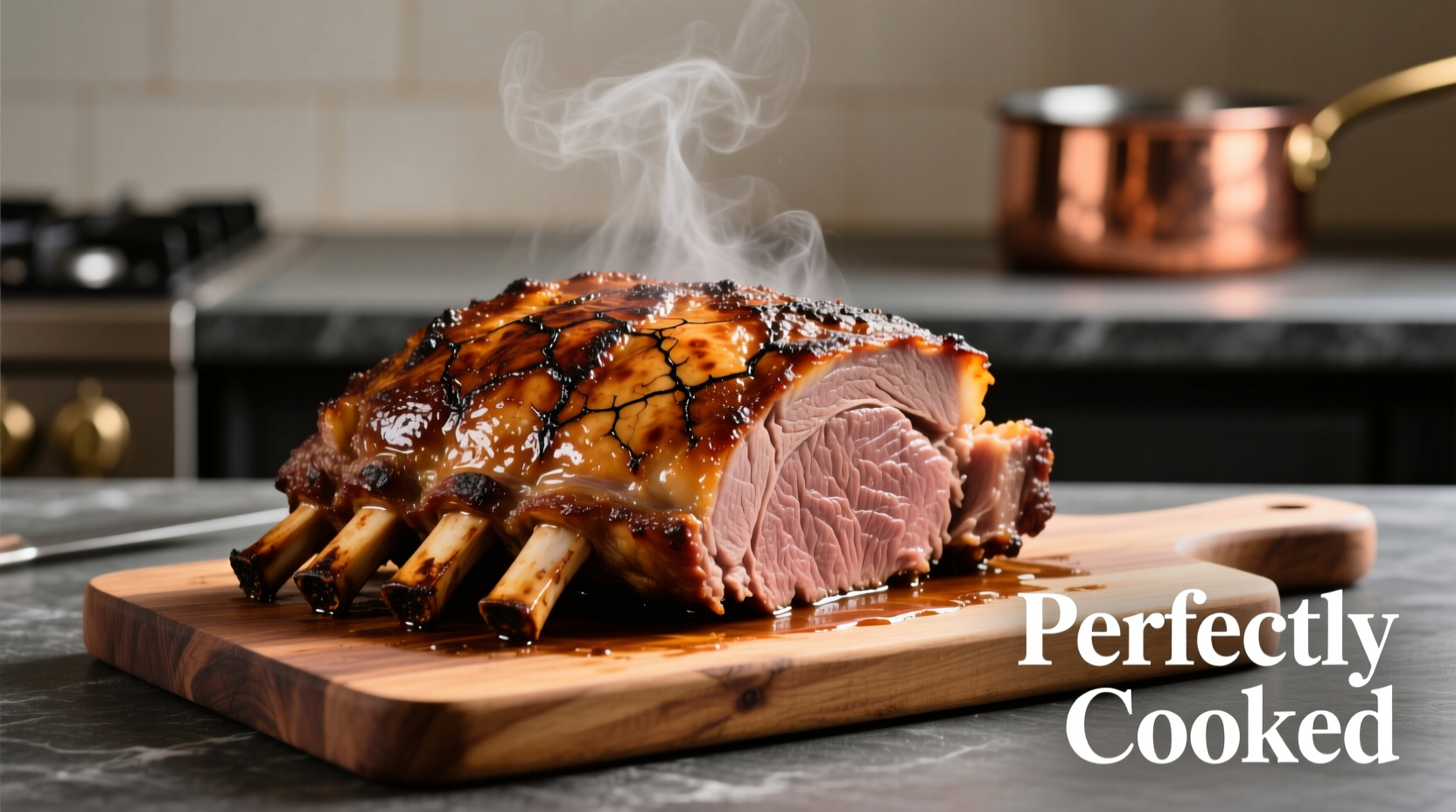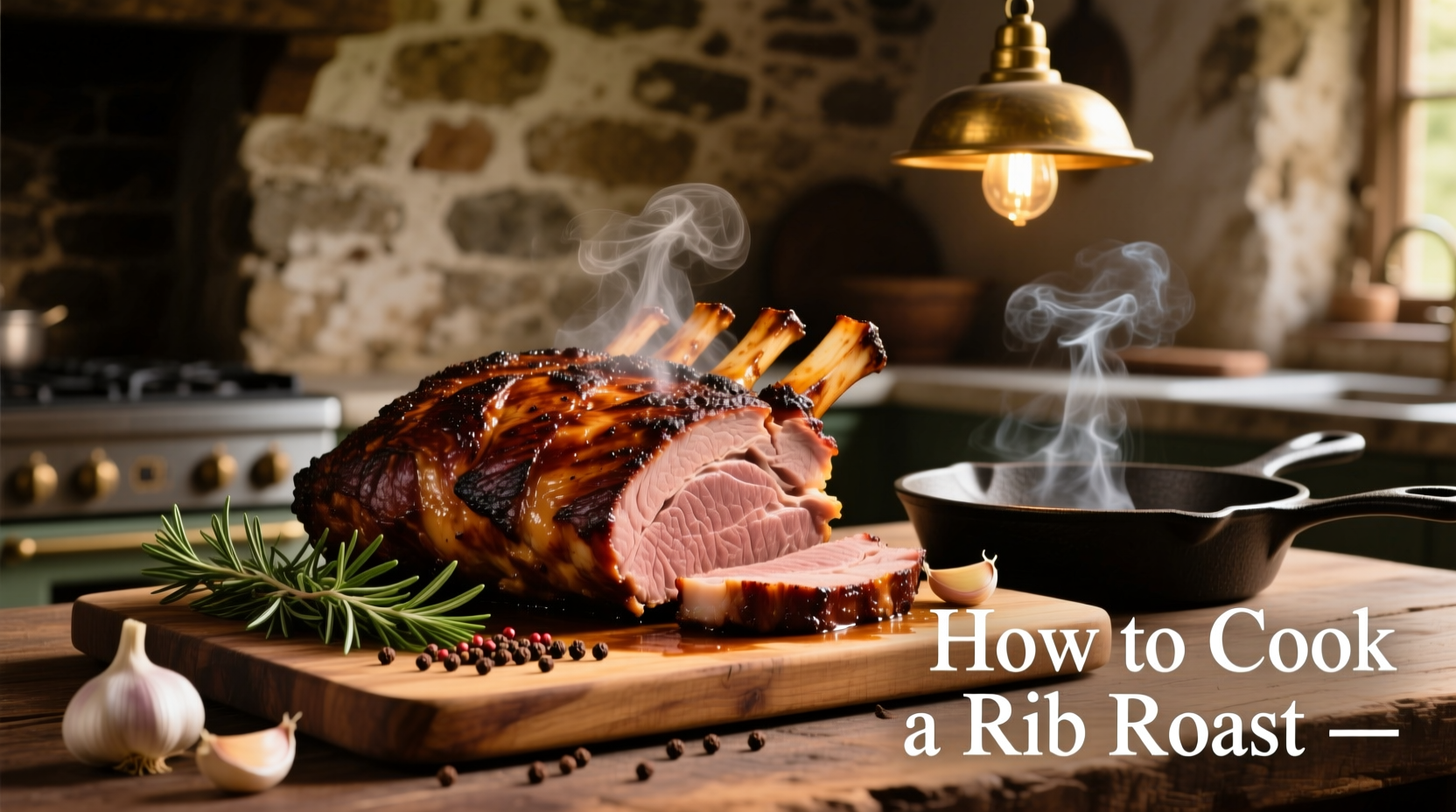The perfect rib roast requires selecting a high-quality cut with good marbling, bringing it to room temperature before cooking, seasoning generously, roasting at 450°F for 15 minutes followed by 325°F until reaching 120-130°F internal temperature, and allowing 20-30 minutes of resting time before carving. This method ensures a beautifully seared exterior with a perfectly pink, tender interior.
Mastering the art of cooking a rib roast transforms a potentially intimidating cut into the centerpiece of any special occasion dinner. As one of the most expensive and prized beef cuts, getting it right matters—both for flavor and value. This guide delivers precisely what you need: a proven method tested by professional chefs that guarantees restaurant-quality results in your home kitchen.
Why Rib Roast Deserves Special Attention
Rib roast, also known as prime rib, comes from the rib section of the cow (ribs 6-12) and contains the prized rib eye muscle. Its rich marbling creates exceptional flavor and tenderness when cooked properly. According to the USDA Food Safety and Inspection Service, this cut's high fat content requires careful temperature management to achieve optimal results without compromising food safety.
| Doneness Level | Internal Temperature | Resting Temp Increase | Final Serving Temp |
|---|---|---|---|
| Rare | 120-125°F | +5-10°F | 125-135°F |
| Medium Rare | 125-130°F | +5-10°F | 130-140°F |
| Medium | 135-140°F | +5-10°F | 140-150°F |
Selecting Your Rib Roast: What Really Matters
Before you even consider cooking, proper selection determines your success. Look for these critical factors:
- Marbling: Abundant, fine white fat streaks throughout the meat (USDA Prime grade offers the most)
- Aging: Dry-aged for 21-28 days enhances tenderness and concentrates flavor
- Size: Allow 1 pound per person for bone-in, 3/4 pound for boneless
- Bone structure: Ask your butcher to "French" the bones for elegant presentation
The Culinary Institute of America's research shows that properly aged rib roast develops complex flavor compounds through enzymatic breakdown, creating significantly more depth than unaged counterparts. This scientific process transforms simple beef into a culinary masterpiece.
Essential Preparation Steps You Can't Skip
Preparation begins days before cooking for optimal results:
- Dry brine 24-48 hours ahead: Rub 1 tablespoon kosher salt per 5 pounds of meat and refrigerate uncovered on a rack
- Bring to room temperature: Remove from refrigerator 3-4 hours before cooking (critical for even cooking)
- Season generously: Use coarse salt, freshly ground black pepper, and optional garlic powder
- Pat completely dry: Moisture prevents proper searing—use paper towels for best results

The Foolproof Cooking Method
Follow this professional technique for guaranteed success:
High-Low Temperature Approach
This two-stage method creates the perfect crust while ensuring even cooking:
- Preheat oven to 450°F with rack in lower third position
- Place roast fat-side up on rack in roasting pan
- Rose at 450°F for 15 minutes to develop crust
- Reduce heat to 325°F without opening oven door
- Cook until internal temperature reaches 115-120°F for rare, 120-125°F for medium-rare
- Use an instant-read thermometer in the thickest part, avoiding bone
According to America's Test Kitchen research, the high-heat start triggers the Maillard reaction more effectively than traditional low-and-slow methods, creating superior flavor development while maintaining precise temperature control.
Why Resting Time Is Non-Negotiable
Resist the temptation to carve immediately! Proper resting allows:
- Redistribution of juices throughout the meat
- Carryover cooking to reach perfect final temperature
- Relaxation of muscle fibers for maximum tenderness
Rest your rib roast for 20-30 minutes tented loosely with foil. During this time, the internal temperature will rise 5-10 degrees (carryover cooking), bringing your roast to the perfect serving temperature. The James Beard Foundation notes that skipping this step can result in up to 40% juice loss when carving.
Troubleshooting Common Rib Roast Problems
Even experienced cooks encounter these issues—here's how to prevent or fix them:
Problem: Uneven Cooking
Solution: Position the roast with the thicker end toward the back of the oven (usually the hottest spot) and rotate the pan 180 degrees halfway through cooking.
Problem: Pale, Unappealing Crust
Solution: Ensure meat is completely dry before seasoning, and consider adding 1 teaspoon baking powder to the salt rub to accelerate browning.
Problem: Overcooked Center
Solution: Start checking temperature 30 minutes before expected finish time. Remember that carryover cooking continues during resting.
Serving and Presentation Tips
Elevate your rib roast presentation with these professional touches:
- Cut between the bones for elegant individual portions
- Serve with the bones standing upright for dramatic presentation
- Offer horseradish cream, Yorkshire puddings, and roasted vegetables as traditional accompaniments
- Carve against the grain for maximum tenderness
For special occasions, consider the historical context: rib roast became popular in American cuisine during the early 20th century as refrigeration technology improved, allowing butchers to dry-age meat properly. This cut was traditionally reserved for Sunday dinners and holidays due to its expense, making it a symbol of celebration that continues today.
Perfect Rib Roast FAQ
How long should I cook a rib roast per pound?
Cook at 450°F for 15 minutes, then 325°F for approximately 11-15 minutes per pound for medium-rare. Always use a meat thermometer rather than time alone, as oven temperatures vary. A 4-bone roast (about 8 pounds) typically takes 1.5-2 hours after the initial high-heat sear.
Should I cook rib roast bone-in or boneless?
Bone-in rib roast offers superior flavor as the bones insulate the meat and impart additional richness during cooking. The bones also create a natural rack for even air circulation. However, boneless is easier to carve and may cook slightly more evenly. Professional chefs overwhelmingly prefer bone-in for special occasions.
What's the best way to reheat leftover rib roast?
To maintain quality, place slices in a baking dish with a splash of beef broth, cover with foil, and heat at 250°F until the internal temperature reaches 110°F. Avoid microwaving, which makes meat tough. For best results, reheat only what you'll eat immediately as repeated reheating degrades quality.
Can I cook rib roast using the reverse sear method?
Yes, the reverse sear method works well for thicker roasts. Cook at 225°F until the internal temperature reaches 110°F, then sear at 500°F for 5-7 minutes. This method provides exceptional edge-to-edge doneness but requires careful monitoring to prevent overcooking during the sear phase.
How do I know when my rib roast is done without a thermometer?
While a thermometer is strongly recommended, you can use the touch test: rare feels like the base of your thumb when touching index finger, medium-rare like middle finger, medium like ring finger. However, this method is unreliable for beginners and doesn't account for varying roast thicknesses. An instant-read thermometer costs less than $20 and prevents costly mistakes with expensive meat.











 浙公网安备
33010002000092号
浙公网安备
33010002000092号 浙B2-20120091-4
浙B2-20120091-4